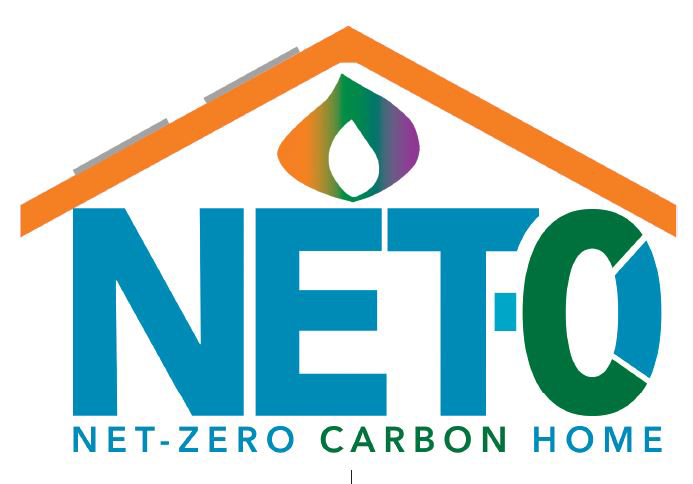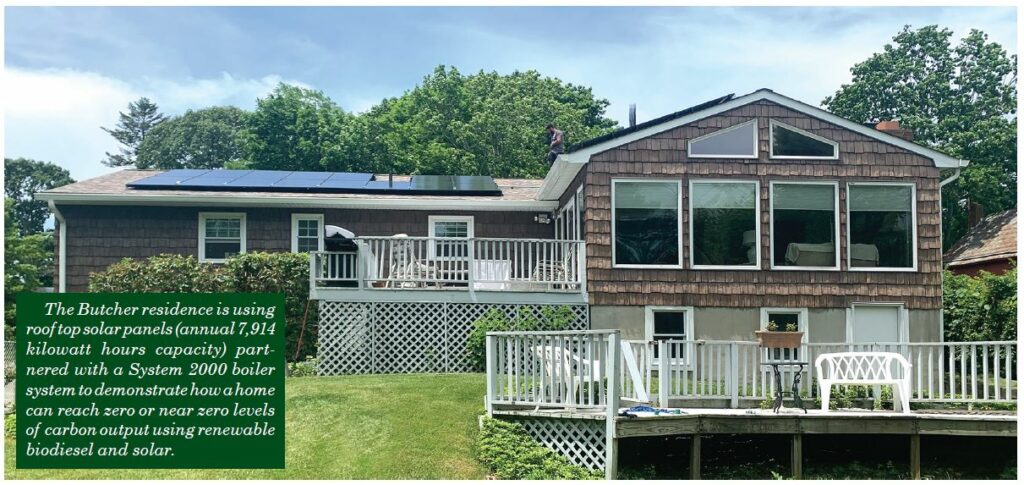Written on: July 7, 2022 by ICM
Can you reduce a home’s carbon emissions to zero using a renewable low carbon liquid fuel and solar panels? The National Oilheat Research Alliance (NORA) says “yes.” In fact, the demonstration has already begun in Port Jefferson, NY at the home of NORA’s Director of Research, Dr. Thomas Butcher.
NORA has been a leader in the transition to low carbon liquid fuels in the home heating sector for decades through testing and promoting the use of the advanced biofuel biodiesel combined with traditional heating oil. NORA’s liquid fuels research laboratory in Plainview, NY is among the country’s leading facilities conducting this type of research.
With public policy in many of the Northeastern States calling for drastic reductions in carbon emissions and traditional heating oil not able to satisfy those requirements, NORA intends to show that the combination of 100% biodiesel partnered with solar panels can bring the home to zero carbon emissions.
This strategy is an alternative to the “all electric” policy of replacing all combustion heating and other home appliances with power-grid run electric furnaces, boilers and appliances.
The all-electric plan will place enormous strain on the utilities and the grid while also placing massive financial burdens on homeowners as they are required to replace their current heating systems with heat pumps. NORA’s zero-carbon home can achieve carbon reduction mostly using existing heating systems and commercially available solar panel systems.

Taking the carbon out of the fuel
The first step in decarbonizing a home heating system is transitioning to a low carbon biofuel. The biofuel widely available to the heating market in the Northeast is biodiesel (ASTM D6751). Relative to petroleum No. 2 fuel, 100% biodiesel (B100) provides a carbon reduction of 75% to 90% with the higher 90% reduction based on the use of waste feed stocks such a used cooking oil. Replacing petroleum with B100 can provide reductions in carbon of up to 90%.
Work is ongoing within the biodiesel industry to reduce even the small amount of carbon emissions associated with biodiesel production and the picture is expected to get even better. The residual emissions can be minimized using a high-efficiency boiler of furnace.
The transition to B100 was made at the Butcher home in 2020 with the biodiesel fuel supplied by Hart Home Comfort, Oakdale, NY. The steel tank is indoors and approximately 15 years old. The tank was filled without cleaning prior to the introduction to B100. There have been no notable service issues since the transition. The heating system includes an Energy Kinetics System 2000, about 10 years old.

Bring on the sun
The second step is the addition to add solar panels on the roof of the home. Electric power purchased from the utility is not entirely “clean” as it has significant carbon emissions associated with electricity generation. There is discussion about transitioning electric generation to renewable sources in the future, but this is more a promise than a reality.
The solar panels can produce more or less power than the home needs at any time of the day. The system installed at Butcher’s home does not include a storage battery but rather “extra” power is exported back to the grid. The home’s historical annual electric power use is 7,199 kilowatt hours including the central air conditioning system. The annual production capacity of the solar panels installed is a nominal 7,914 kilowatt hours. In addition to eliminating carbon associated with power used in the home, the surplus power sent back to the grid reduces carbon emissions further and provides an offset to the small amount of carbon emissions associated with the biodiesel use.
Financial sense?
The solar panel system at Butcher’s home was installed by Long Island Power Solutions, Ronkonkoma, NY. The State and Federal Governments offered financial incentives to install solar panels, making the installation attractive.
At the time the installation was planned, the residential power rate was approximately $0.23 per kilowatt hour. At this rate, the payback period was calculated at seven years with an effective annual payback of 14.3%. At the time of this writing, it has risen to $0.28 per kilowatt hour making the payback period drop to 5.74 years after which, the electric cost will effectively be zero.
According to Dr. Butcher, “With uncertainty about future rates, I feel this was a great step to eliminate electric bills. These steps to quickly make my home carbon-free have been very easy, I didn’t make any changes to my heating system. The investment I have made in the solar panels will pay back quickly and I feel we are ready for the next decades, with a system that keeps us warm, provides plenty of hot water, and will end up being the cheapest approach.”
NORA’s Net Zero Carbon Home will continue to be monitored for financial returns and GHG reduction values and upgrades to further the carbon emission reductions will be assessed. Check back with ICM for updates. ICM
Editors note: NORA wants to extend the Zero-Carbon Home project to other U.S. States. If you have an interest in working with NORA, contact info@noraweb.org.
The Green Growth of an Industry
Don Farrell, Publisher
The oilheat industry has 100 years of history providing warmth and comfort to millions of U.S. homes. In 2022, the old way of doing things needs to change. At Federal and State levels, regulations and legislation are demanding greatly reduced carbon emissions from fossil fuels in response to concerns about their contribution to climate change. Continued use of traditional petroleum #2 heating oil is not an option in a carbon-reduced world.

The oilheat industry has an effective and available alternative to #2 heating oil: Bioheat ® fuel. Bioheat® is made from blends of ASTM D6751 biodiesel and petroleum heating oil and first came into the market in the early 2000s. It was included in the ASTM definition of #2 heating oil (at 5% blend) years ago.
With the current demands for carbon reduction, the industry is making a transition to a Low Carbon Liquid Fuel. Many States have incorporated low carbon fuel blended with heating oil into their energy plans. This is a direct result of vigorous and ongoing urging by the industry’s State and regional associations. Some States (NY, CT, RI) have legislative mandates that require biodiesel blends while others have incentives such as a fuel standard or credit program that encourages the use of low carbon fuel blends (MA, NH).
The work is not complete. There are many in public policy who do not see a place for any home heating combustion regardless of the fuel. As the industry continues to press its case, it is imperative that the adoption of low carbon liquid fuels continues providing credibility for the industry’s arguments for low carbon liquid home heating.
Not only has the industry been lobbying for the inclusion of low carbon liquid fuels in State energy policies, it has also made public statements about its commitment to the transition. Among them, the Providence Resolution was passed by members of the National Energy & Fuels Institute (NEFI) in 2019 and subsequently endorsed by State associations and other industry groups. Some of the largest oilheat fuel wholesale suppliers have also publicly committed to lower carbon offerings as well as assisting with a legislative outreach program through Project Carbon Freedom.
Millions of homeowners are already lowering their carbon emissions thanks to the mandates and fuel standards in place along with the ever-increasing number of retail fuel distributors who have understood the need to become “low carbon liquid fuel providers” to remain viable in the low-carbon future.
Supporting this effort is R&D conducted by the National Oilheat Research Alliance (NORA) and the Clean Fuels Alliance of America, and others. Heating equipment manufacturers, especially those represented by the Oilheat Manufacturers Association (OMA), have embraced the need for heating appliances and components fully compatible with the highest blends of low carbon fuels and are currently working with organizations like U.L. and ASTM as they design their next-generation products.
The oilheat industry is not trying to halt this transition and is unusual among industries in its desire and commitment to drive such sweeping changes. Perhaps this is the result of generations of community-minded, customer-oriented oilheat company owners wanting to continue to provide their community with safe, reliable and environmentally responsible comfort.